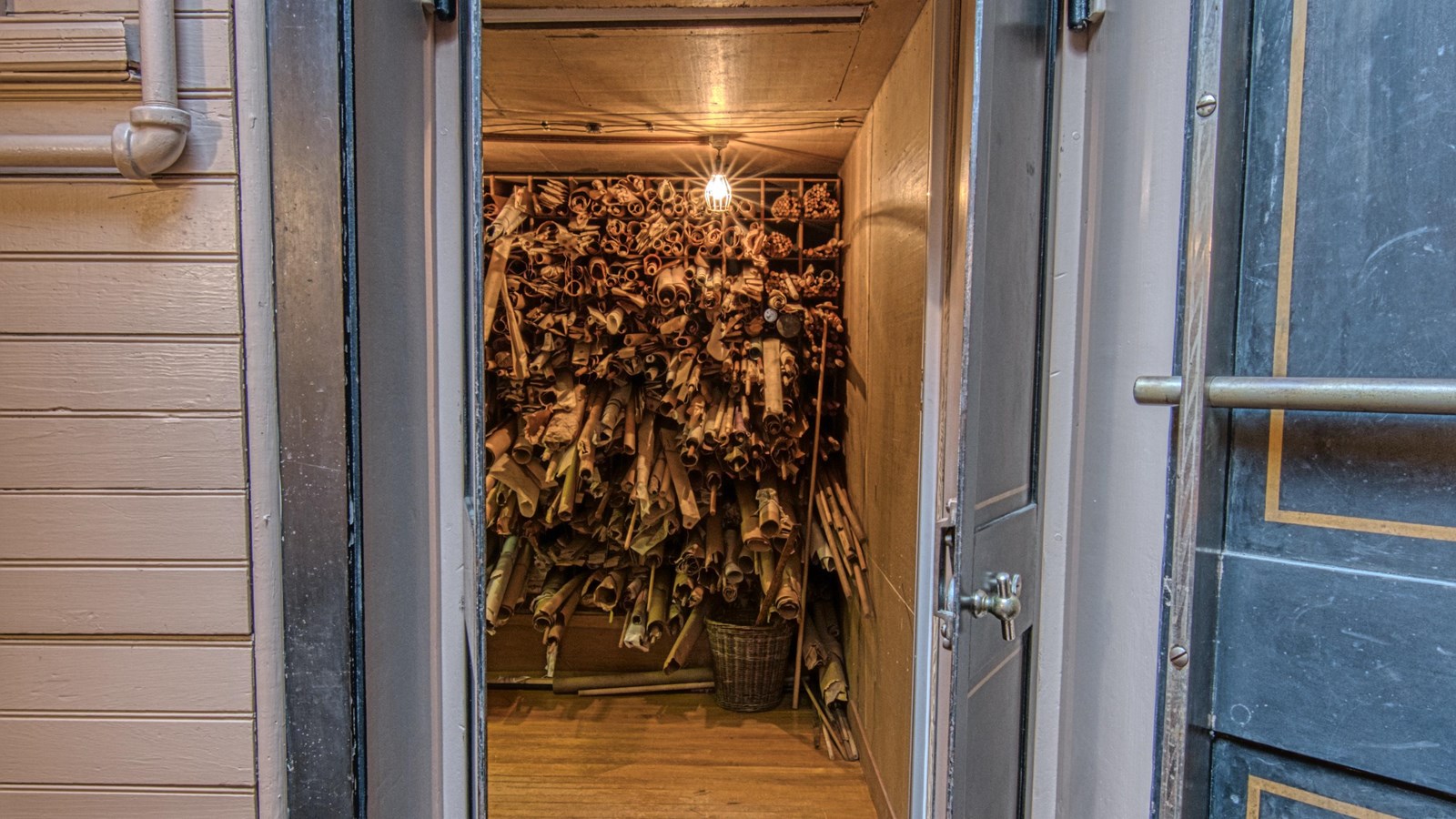Last updated: March 8, 2022
Place
The Vault

From the photographic records room to the engineers office, the drafting department, planting department and printing department, the six thousand designs the Olmsted firm would work on in nearly 100 years would produce over one million pieces of paper, which needed a safe place for storage. The final modification done during Olmsted Sr.’s time would be to ensure these materials, a vital part of the histories of many parks, schools, and towns, were stored in a safe place. Starting as a two story vault, a third was added when it was realized just how much materials needed proper storing. In the photographic records room, there was a fear about keeping such valuable materials stored in wooded boxes, in a wooded home. Part of Fairsted is not the wooded house, but a brick area. This brick area is the vault, which would prove a better defense against fire. Harry Perkins was tasked with overseeing the complex organization and distribution of the firm’s plans. The office cartoons those in the Olmsted firm were so fond of making includes a take on Perkins role in the vault. He was meticulous about his organization method, refusing anyone access to get materials from the vault, because one plan put back out of order could mean it’s lost for years. When the NPS arrived at Fairsted in 1979, what they saw was stacks of rolled up tubes of paper pilled on oneanother. That was Perkins organizational method. It took 18 years to pull, conserve, and catalog everything in the vault.
